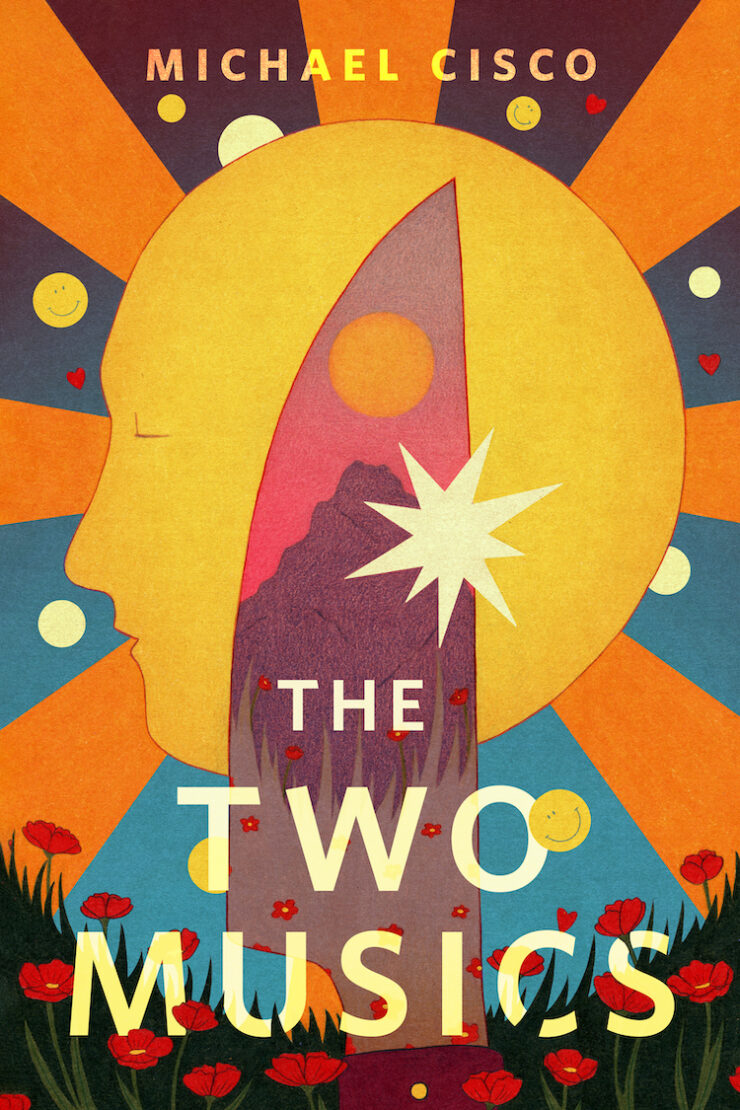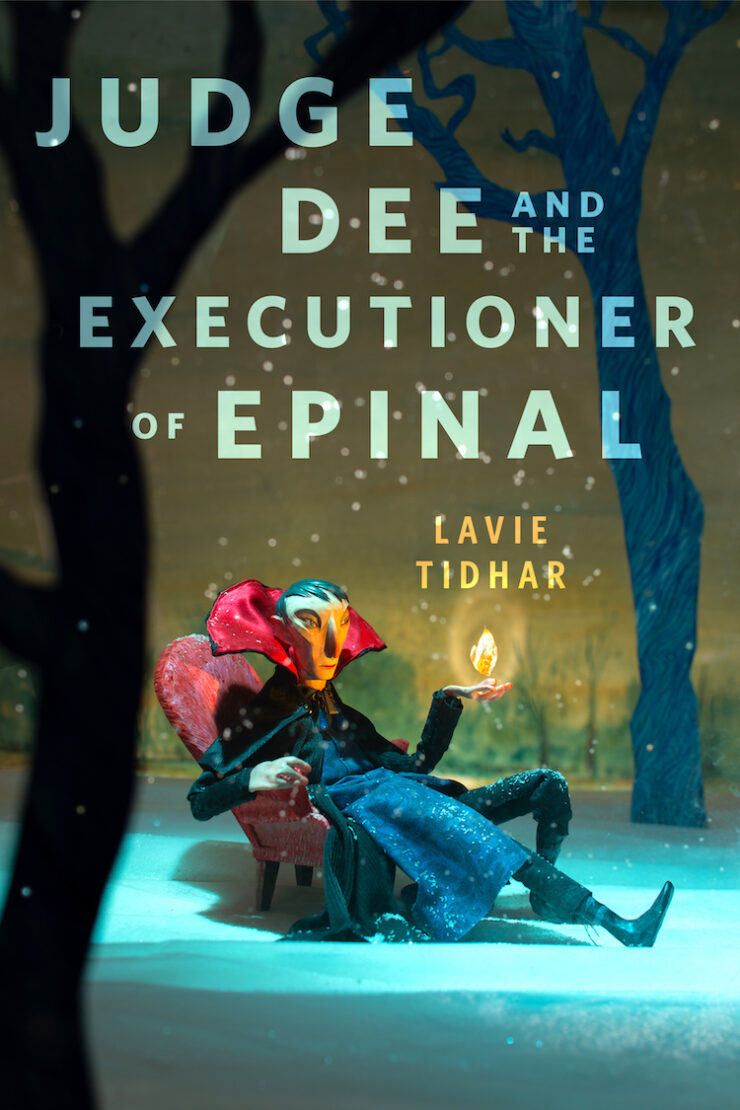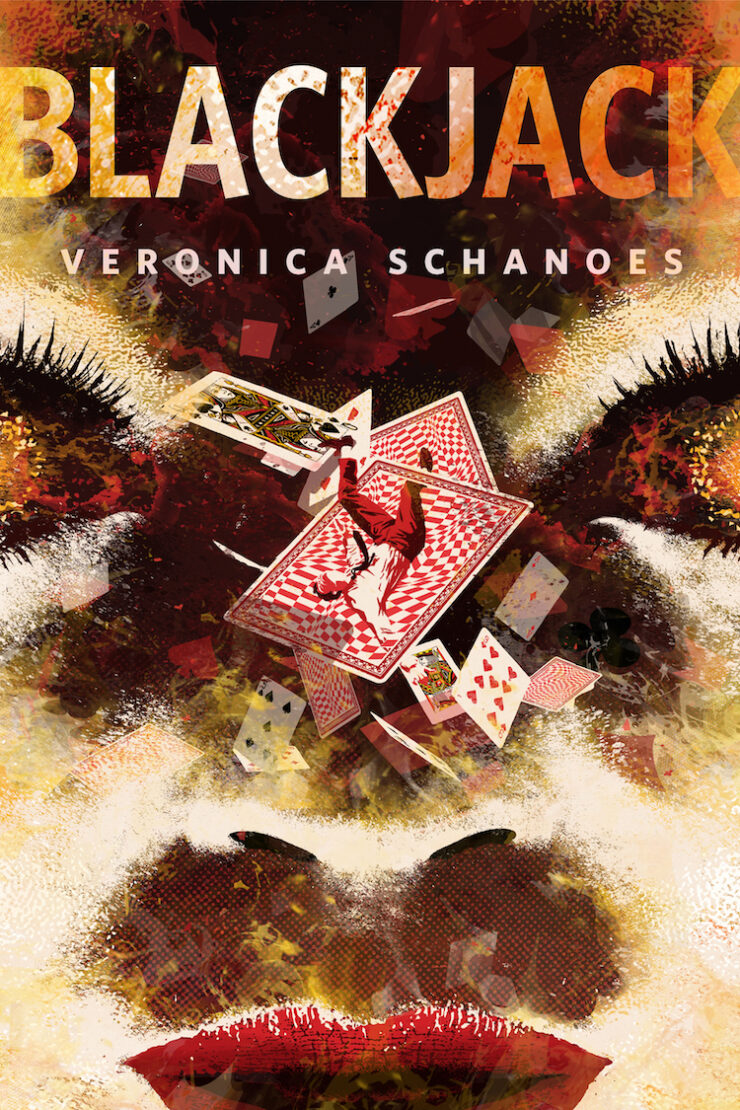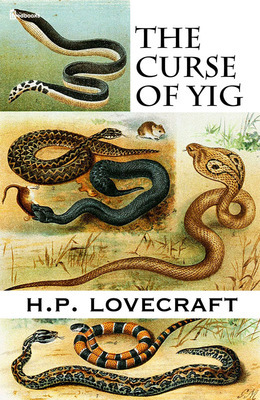Welcome back to the Lovecraft reread, in which two modern Mythos writers get girl cooties all over old Howard’s original stories.
Today we’re looking at “The Curse of Yig,” a collaboration between Lovecraft and Zealia Bishop written in 1928, and first published in the November 1929 issue of Weird Tales. You can read it here.
Spoilers ahead!
“Audrey sat up in bed and watched the flare of the match grow into the steady glow of the lantern. Then, as their eyes began to take in the whole of the room, the crude rafters shook with the frenzy of their simultaneous shriek. For the flat, rocky floor, revealed in the new-born illumination, was one seething, brown-speckled mass of wriggling rattlesnakes, slithering toward the fire, and even now turning their loathsome heads to menace the fright-blasted lantern-bearer.”
Summary: Our ethnologist narrator travels to Oklahoma for evidence to back his theory that the benign snake-god Quetzalcoatl had a darker prototype. Yig, half-human father of serpents, is supposed to be well-disposed toward those who respect his children, venomously vindictive toward those who harm them. In autumn, when he grows ravenous, the Pawnee and Wichita and Caddo perform rites to drive him off, beating tom-toms for weeks on end.
Few will speak of Yig. Those who do direct our narrator to an asylum in Guthrie. There Dr. McNeill can show him a certain “very terrible relic.” There’s nothing supernatural about it, McNeill claims, only proof of the power belief exercises on susceptible minds. Even so, the thing makes him shiver at times.
He leads narrator to an isolated basement cell and lets him peer in through an observation panel. The dim-lit, malodorous den houses a roughly humaniform creature with flattened head, squamous and speckled hide, and beady black eyes. It wriggles belly-down. It hisses. It stares. Narrator reels and is guided away. Back in his private office, McNeill relates the history of the squirming horror.
In 1889, Walker and Audrey Davis left Arkansas to stake a claim in Oklahoma. Along with all his household goods and his ancient dog Wolf, Walker brought along a pathological dread of snakes. During their journey west, he tries to avoid ophidian encounters, but one evening Audrey finds a nest of four baby rattlesnakes near their camp. She bludgeons them to death. Coming up before she can hide the corpses, Walker’s horrified. He’s been listening with morbid fascination to tales of Yig; now he upbraids Audrey for killing the god’s children. Doesn’t she know Yig will exact vengeance by turning her into a spotted snake?
Walker keeps up his dire prophesizing the rest of the trip. They claim land and build their cabin on a convenient slab of stone. A new neighbor tells Audrey about a man bitten by so many rattlers that his body swelled to the point of popping. Audrey doesn’t repeat the anecdote to Walker. Bad enough he visits the nearby Wichita village, trading whiskey for charms to ward off the god’s wrath.
The dangerous time of corn harvest arrives hot, and the Wichita start in on the tom-toms. Dust and the weird rhythms prey on the settlers’ nerves, but they still celebrate their harvest. On Hallowe’en, the party’s at the Davis homestead. Much merry-making and dancing make Walker and Audrey sleep soundly afterwards, while old Wolf slumbers by the hearth on which the first fire of the year smolders – the unseasonably hot weather has suddenly turned cold.
Audrey wakes from nightmares of Yig. Already sitting up, Walker calls her attention to a strange buzzing and rustling. He lights a lantern and gets out of bed to investigate, and they see a horde of rattlers slithering across the stone floor toward the warm hearth!
Walker faints. The lantern goes out. In the dark Audrey cringes under blankets, sure the snakes have killed Walker and will now twine up the bedposts after her, bringing Yig’s revenge. The wait stretches on and on. When the distant tom-toms hush, she’s not relieved. A worse sound assaults her ears: the pop of splitting skin–just like in the neighbor’s story–followed by a poisoned stench. Audrey screams and screams.
Things get worse still. Against the star-lit square of window, she sees the silhouette of a gigantic head and shoulders. Yig has come! Mad with terror, Audrey grabs an ax and attacks the looming shadow.
The next morning a neighbor finds old Wolf dead on the hearth, his corpse burst from snake venom. Walker lies dead by the bed, free of snake bite, but hacked to death by an ax. And Audrey writhes flat on her belly, a “mute mad caricature.” Except she does hiss. And hiss. And hiss.
McNeill concludes the story while he and our narrator fortify themselves with nips from the doctor’s flask. He says Audrey was brought to the asylum, and was occasionally lucid enough to tell her tale. Then the lucid spells ceased, her hair fell out, her skin turned splotchy. When she died –
Wait, narrator says. She died? Then what was that in the cell?
That, McNeill says, is what was born to her nine months later, one of four offspring. It was the only “child” to survive.
What’s Cyclopean: Save for a single “squamous,” this story is remarkably free of Lovecraft’s adjectival fingerprints.
The Degenerate Dutch: Some mildly patronizing discussion of Indian customs, all fairly unhysterical and typical of the time. Notably Audrey’s mixed ancestry is mentioned without censure.
Mythos Making: Yig shows up in other Lovecraft-Bishop collaborations and is occasionally integrated into the pantheon elsewhere as well.
Libronomicon: This has to be good for an article in an ethnology journal, right?
Madness Takes Its Toll: Apparently being part snake-god is enough to get you stuck in an asylum. Yay ’20s psychology.
Anne’s Commentary
As far as I can make out, it’s unclear whether Lovecraft ghost-wrote “Yig” from Bishop’s idea and notes, or whether she took a more collaborative part in the writing itself. What’s certain (unless memory fails me) is that this is the only Lovecraft story in which a woman is a prominent point-of-view character. Her sister in the Mythos, as we’ll see, is Lavinia Whateley, but poor Lavinia gets no personal say in her story, whereas Audrey’s ordeal in the rattlesnake-invaded cabin is vividly rendered, down to her imagined sensation of things creeping among the blankets and her auditory torture via tom-toms and ticking alarm clock.
Prior to this rereading, I’d forgotten that Walker didn’t succumb to rattlesnake bites, that presumably the window-silhouetted shoulders and head Audrey saw were his, not Yig’s. I had the lingering impression that Yig really does make an appearance, rearing up outside the window before entering to do unspeakable things. Partial explanation: I want Yig to show up. One thing that always annoys me is when a good supernatural set-up is ruined by a natural explanation, a la Dr. McNeill’s lame “Oh, it was all in her head. Including her own somatic changes and what came out of her womb.”
So, yeah, my imagination went to a true manifestation of the god, and I bet my imagination has had lots of company over the years. Audrey killed four of Yig’s children, so she had to bear four of his children. And in order for her to do that, Yig had to impregnate her. No way Lovecraft was going to write a sex scene, be it rape or dubious consent or hell-yeah-let’s-go. Even in his most sexually fraught story, “The Thing on the Doorstep,” much may be implied (fairly distantly), little owned up to. In “Shadow Over Innsmouth,” for example, we hear that the Deep Ones hanker to “mix” with the townspeople, and that certain houses are obliged in the end to “entertain guests.” We all know what “entertaining guests” means.
Here Dr. McNeill does the Lovecraft shuffle for him. We can’t know whether Audrey ever told him all that happened that Hallowe’en night, or, if she did, whether he isn’t holding some back from narrator. I think he’s either heard more (and doesn’t want to state it), or he’s inferred more. Either way, he implies terrible, terrible things in that last revelation of his. It’s not Audrey in the basement cell. It’s her child, born three-quarters of a year after her ordeal. Three-quarters of a year is a sly, rather equivocating way of saying nine months, isn’t it? I’d say the good doctor is giving narrator a wink-wink-nudge-nudge by obliquely talking gestational period.
It’s possible that Audrey was already pregnant before Hallowe’en night, but sly as the doctor, Lovecraft may be steering us away from that solution by going on at interesting length about how vigorously the Davises danced at their party. Not that Audrey would have known she was pregnant yet, with nine full months to go. Not that she would necessarily have thought herself incapable of “great feats of saltatory grotesqueness” if she had known. Audrey was no hothouse flower. Nevertheless, there’s that little hint that she was “unencumbered” at the start of the night.
Another subtle hint – the number of children born. Quadruplets are rare in humans. And what a coincidence that four baby rattlers died, and four human-rattler hybrids replaced them. And the doctor is even sly or shy about saying “four.” He says “that” was born to Audrey, and there were three more of them. We can do the math.
Anyhow, I put “Yig” in the viscerally frightening sub-genre of obstetrical horror. “The Dunwich Horror” also has an obstetrical horror at its heart, and a sexual abnormality worse than the run-of-the-mill incests of the degraded town. I mean, Lavinia Whateley “entertains” Yog-Sothoth one way or another (tentacle porn, or congeries porn, even kinkier!) Then she has his twins after one hell of a labor from the screaming involved. And who can wonder, given Wilbur’s saurian hindquarters and the still greater Outer Godliness of his brother.
Ick, shudder. “Yig” (and “Dunwich”) can join the ranks of Rosemary’s Baby and It’s Alive and the dream maggot-birth in The Fly remake. Throw in the pseudo-pregnancies and shocking labors of Alien et alia. Not that Lovecraft would want to match any of those for graphicness. And I think it might have dropped his prominent jaw to his toes to read the most horrific of all obstetrical horrors, the Caesarean-by-vampire-teeth delivery in Breaking Dawn. I mean, whoa. I was forced to watch the movie just to see how they’d DO that on screen.
Mostly by implication, actually. Whew.
Ruthanna’s Commentary
Snakes. Why does it always have to be snakes?
In a universe of cosmic horror, where vast abysses team with incomprehensible life forms and mindless gods rule amid primal fires and monotonous flutes… why fall back on the simplicity of a relatively common human phobia?
There’s some controversy about whether fear of snakes may be partly instinctive—whether humans have a predisposition to it, so that an early bad experience with snakes will set off a phobia where an early bad experience with hedgehogs might not. If that’s the case, I’m not one of the people who hit that trigger. But we owned a boa constrictor for a while; when a whole wall of your living room is taken up by snake habitat, you learn just how common that phobia really is. So any story about snakes being freaky is sure of a large and sympathetic audience. But it seems rather unimaginative for a guy who came up with Cthulhu, or for a woman who only a year later would collaborate with Lovecraft on the over-the-top (under the top?) multi-layered horror of “The Mound.”
This story shares its Oklahoma setting with the frame story for “The Mound,” as well as an Indian ethnology narrator. Also like that story, the narrator reports from a considerable remove—he interviews a doctor who learned about the events after they took place. And like that story, I seriously side-eye the claims about how it was written. Every summary I’ve seen of the Lovecraft-Bishop collaborations reports that Howard basically ghost-wrote the stories from the roughest of outlines. Yet where his collaborations with Hazel Heald feel like his, and are full of references to the rest of the Mythos and enough Cyclopeans that it almost had to be intended as an in-joke, the Bishop stories feel distinctly different.
The racism in Yig is understated, completely non-visceral, and very much a product of the typical assumptions of 20s anthropology. After gritting my teeth through the New York stories, I can’t work up much shock over a couple of references to “big medicine,” especially not when placed alongside repeated reminders that hey, white people are just as superstitious and primitive in their own way. “Mound” gets a lot nastier, but the feel is still more academic than most of Lovecraft’s terror of the Other.
The language is pretty obviously not Lovecraft on one of his hyperactively adjectival days, but it’s also not even much like Lovecraft’s more constrained stories. Joshi likes to emphasize Howard’s stated intention to choose precisely the right word for each desired image and effect. I like to emphasize that while this may have been his intention, he was also utterly impervious to concerns about repetition, or about whether his audience might have a convenient dictionary sitting beside their copies of Weird Tales. It gives his language an impression that wavers between Shakespeare and found folk art, and there’s nothing else like it in American literature. The language in “Yig” isn’t much like either of his extremes, no matter how I squint.
In spite of my eye-rolling at the pedestrian fear at its center, I actually do like this story. The bit with Audrey lying in bed, sure of her husband’s death, is genuinely creepy, ranging all the way to terrifying if I imagine myself in that position. Unlike most things Lovecraft assumes will invoke instinctive terror, “my loved ones are hurt and there’s nothing I can do and I can’t see” probably manages the trick.
On the flip side of the story, Yig’s motivation is itself pretty sympathetic, even if not intended so. You hurt my children, I hurt you. Most people can probably get behind that, but the story tries to make something incomprehensible out of it.
Speaking of taking care of one’s children—poor baby snake thing, stuck in a tiny cell since birth for the crime of looking all snakey. Yig takes revenge on those who kill his kids, but apparently doesn’t pay much attention if they get locked up for life. Woe to whatever idiot tries to give that baby a “merciful release.” They’d do far better to let it out so it can crawl back to Daddy. Or find someone who likes boa constrictors to take it in and give it a proper, if belated, snake-godlet childhood.
Next week (and clearly not, as previously suggested in hideous whispered rumor, this week), we explore the terrifying nexus of old houses and cosmic chasms in “Dreams in the Witch House.”
Ruthanna Emrys’s neo-Lovecraftian novelette “The Litany of Earth” is available on Tor.com, along with the more recent but distinctly non-Lovecraftian “Seven Commentaries on an Imperfect Land and “The Deepest Rift.” Her work has also appeared at Strange Horizons and Analog. She can frequently be found online on Twitter and Livejournal. She lives in a large, chaotic household—mostly mammalian—outside Washington DC.
Anne M. Pillsworth’s short story “Geldman’s Pharmacy” received honorable mention in The Year’s Best Fantasy and Horror, Thirteenth Annual Collection. “The Madonna of the Abattoir” is published on Tor.com, and her first novel, Summoned, is available from Tor Teen. She currently lives in a Victorian trolley car suburb of Providence, Rhode Island.










